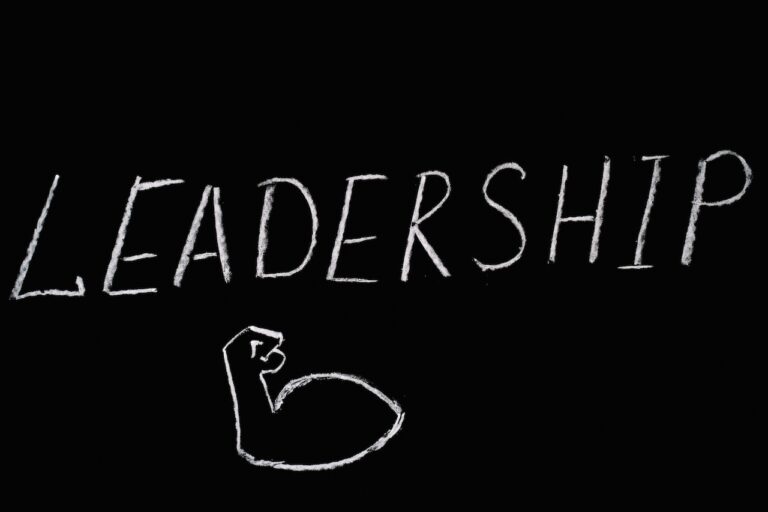From Average to Great: The Power of Setting Standards in Teams
The Difference Between Average Teams and Great Teams
In any team or organization, there are guidelines that dictate how things are done. These guidelines may be in the form of rules, regulations, policies, or procedures. However, it is important to recognize that there is a difference between rules and standards. Average teams have rules, but great teams have standards.
Rules are prescriptive, specific, and often rigid. They focus on what you can and cannot do, with little room for interpretation. Rules are often compliance-driven, meaning they are in place to ensure that people follow a set of predetermined guidelines. The problem with this approach is that it can stifle creativity, innovation, and personal responsibility.
In contrast, standards are principle-driven, and they focus on the desired outcome. Standards allow for flexibility and adaptability, encouraging team members to be creative and innovative in how they approach their work. Standards set a higher bar for performance, challenging team members to exceed expectations and take personal responsibility for their work.
The difference between rules and standards is not just a matter of semantics. It can have a profound impact on the success of a team. In this article, we will explore the concept of average teams having rules and great teams having standards. We will examine the characteristics of average and great teams, the process of creating standards, the benefits of standards, and the pitfalls to avoid.
It is essential to understand that setting standards is not about creating a set of arbitrary guidelines. It is about creating a shared understanding of what is expected, how to achieve it, and why it matters. By doing so, teams can create a culture of excellence that fosters creativity, innovation, and personal responsibility.
In the following sections, we will explore the characteristics of average and great teams and how standards can transform a team’s performance. We will also provide guidance on how to create and implement standards and what pitfalls to avoid.
Understanding Rules and Standards
Before we can delve deeper into the concept of average teams having rules and great teams having standards, we need to first understand what rules and standards are.
Rules are often created to ensure that people follow a set of predetermined guidelines. They are prescriptive, specific, and often rigid. Rules are often compliance-driven, meaning they are in place to ensure that people follow a set of predetermined guidelines. Rules tend to focus on what you can and cannot do, with little room for interpretation. While rules can be useful in certain situations, they can also stifle creativity, innovation, and personal responsibility.
In contrast, standards are principle-driven, and they focus on the desired outcome. They allow for flexibility and adaptability, encouraging team members to be creative and innovative in how they approach their work. Standards set a higher bar for performance, challenging team members to exceed expectations and take personal responsibility for their work.
The difference between rules and standards can be illustrated by the following example: imagine a restaurant with a set of rules that dictate how the staff should greet customers, how they should take orders, and how they should serve food. While these rules may ensure that customers are served in a consistent and timely manner, they can also limit the staff’s ability to be creative and adapt to changing situations. In contrast, if the restaurant sets standards for customer service, such as providing a welcoming environment, ensuring that customers’ needs are met, and going above and beyond to provide a memorable experience, the staff will be empowered to be creative and innovative in how they achieve those goals.
Standards are not just about the end result; they are also about the process of achieving that result. When standards are set, team members are encouraged to take ownership of their work and to be accountable for their actions. By setting standards, teams can create a culture of excellence that fosters creativity, innovation, and personal responsibility.
It is important to note that setting standards is not about creating a set of arbitrary guidelines. Standards need to be relevant, meaningful, and achievable. They should be developed in collaboration with team members, and they should reflect the team’s values, goals, and objectives. When team members are involved in the process of setting standards, they are more likely to buy into them and to feel a sense of ownership and accountability.
Understanding the difference between rules and standards is crucial in creating a high-performing team. Rules tend to be compliance-driven and limit creativity and personal responsibility, while standards are principle-driven and encourage flexibility, adaptability, and personal responsibility. In the following sections, we will explore the characteristics of average and great teams and how standards can transform a team’s performance.
Characteristics of Average Teams
Teams that operate solely on rules tend to have a number of characteristics that set them apart from teams that operate on standards. These characteristics can hinder the team’s ability to achieve its goals and to excel in its field. In this section, we will explore some of the characteristics of average teams.
Focus on Rules
Average teams tend to be focused on rules. They rely on a set of predetermined guidelines to dictate how things are done. The emphasis is on following these rules, often at the expense of creativity, innovation, and personal responsibility. This can lead to a lack of adaptability and flexibility, making it difficult for the team to respond to changing circumstances.
Compliance-Driven
Teams that operate on rules tend to be compliance-driven. The focus is on ensuring that team members follow the rules, often through a system of rewards and punishments. This can create a culture of fear and mistrust, where team members are more concerned with avoiding punishment than with doing their best work. This can lead to a lack of engagement and motivation, making it difficult for the team to achieve its goals.
Rigid and Inflexible
Teams that operate on rules tend to be rigid and inflexible. There is little room for interpretation or deviation from the established guidelines. This can limit the team’s ability to be creative and innovative, making it difficult to find new and better ways of doing things. This can also lead to a lack of adaptability and flexibility, making it difficult for the team to respond to changing circumstances.
Lack of Creativity and Innovation
Teams that operate on rules tend to lack creativity and innovation. The emphasis is on following the established guidelines, rather than on finding new and better ways of doing things. This can stifle creativity and innovation, making it difficult for the team to stay ahead of the competition. It can also lead to a lack of motivation and engagement, as team members may feel that their contributions are not valued.
Lack of Personal Responsibility
Teams that operate on rules tend to lack personal responsibility. The emphasis is on following the rules, rather than on taking ownership of one’s work. This can lead to a lack of accountability, as team members may feel that they are not responsible for the outcome of their work. This can also lead to a lack of engagement and motivation, as team members may feel that their contributions are not valued.
In summary, average teams tend to be focused on rules, compliance-driven, rigid and inflexible, lacking in creativity and innovation, and lacking in personal responsibility. In the following section, we will explore the characteristics of great teams and how they differ from average teams.
Characteristics of Great Teams
Great teams are characterized by their ability to operate on standards rather than rules. They are able to achieve a higher level of performance and success by setting high standards and encouraging team members to take personal responsibility for their work. In this section, we will explore some of the characteristics of great teams.
Focus on Standards
Great teams focus on standards, rather than rules. They set high expectations for themselves and for each other, based on shared values, principles, and goals. The emphasis is on achieving these standards, rather than on following a set of predetermined guidelines. This encourages creativity, innovation, and personal responsibility, making it easier for the team to achieve its goals.
Principle-Driven
Great teams are principle-driven, rather than compliance-driven. They are guided by a set of shared values, principles, and goals, rather than by a system of rewards and punishments. This creates a culture of trust and collaboration, where team members are encouraged to take ownership of their work and to work together to achieve common goals.
Flexible and Adaptable
Great teams are flexible and adaptable. They are able to respond to changing circumstances and to find new and better ways of doing things. This flexibility allows them to stay ahead of the competition and to achieve their goals in an ever-changing world. This also encourages creativity and innovation, making it easier for the team to find new solutions to old problems.
Encourages Creativity and Innovation
Great teams encourage creativity and innovation. They understand the importance of finding new and better ways of doing things and are willing to take risks to achieve their goals. This creativity and innovation can lead to breakthroughs in technology, new products, and better ways of serving customers.
Takes Personal Responsibility
Great teams take personal responsibility for their work. They understand that they are responsible for the outcome of their work and for achieving the team’s goals. This creates a sense of accountability and ownership, making it easier for the team to work together to achieve its goals. This also encourages engagement and motivation, as team members feel that their contributions are valued and that they are making a difference.
In summary, great teams focus on standards, are principle-driven, flexible and adaptable, encourage creativity and innovation, and take personal responsibility for their work. In the next section, we will explore the process of creating standards in a team.
Creating Standards
Setting standards in a team is not just about creating a set of arbitrary guidelines. It is about creating a shared understanding of what is expected, how to achieve it, and why it matters. Standards need to be relevant, meaningful, and achievable, reflecting the team’s values, goals, and objectives. In this section, we will explore the steps to create standards in a team.
Steps to Create Standards in a Team
-
Define the standards: The first step in creating standards is to define what is expected of the team. This involves setting clear goals and objectives, as well as identifying the behaviors, attitudes, and actions that are necessary to achieve them.
-
Involve team members: It is important to involve team members in the process of creating standards. This not only ensures that the standards are relevant and meaningful, but it also creates a sense of ownership and accountability among team members.
-
Communicate the standards: Once the standards have been defined, it is important to communicate them clearly and effectively to all team members. This includes explaining the rationale behind the standards and how they relate to the team’s goals and objectives.
-
Implement the standards: Implementing the standards involves ensuring that all team members are aware of the standards and are committed to achieving them. This may involve providing training, coaching, and support to help team members meet the standards.
-
Monitor and evaluate the standards: Finally, it is important to monitor and evaluate the standards on an ongoing basis. This involves measuring the team’s performance against the standards, providing feedback to team members, and making adjustments as necessary.
Importance of Involving Team Members
Involving team members in the process of creating standards is crucial for several reasons. First, it ensures that the standards are relevant and meaningful to the team. When team members are involved in setting the standards, they are more likely to buy into them and to feel a sense of ownership and accountability. This makes it easier for them to work together to achieve the team’s goals.
Second, involving team members in the process of creating standards can help to identify potential problems and challenges. Team members may have insights and perspectives that leaders may not have considered, which can help to create more effective and realistic standards.
Finally, involving team members in the process of creating standards can help to build trust and collaboration within the team. When team members feel that their input is valued and that they are part of the decision-making process, they are more likely to be engaged and motivated.
Communicating Standards
Communicating the standards is also crucial for their success. Team members need to understand the standards, why they are important, and how they relate to the team’s goals and objectives. Leaders should communicate the standards clearly and effectively, using examples and stories to help team members understand how the standards apply in practice.
Implementing Standards
Implementing standards involves ensuring that all team members are aware of the standards and are committed to achieving them. This may involve providing training, coaching, and support to help team members meet the standards. It may also involve creating systems and processes to help team members achieve the standards, such as performance metrics, recognition programs, and accountability measures.
Monitoring and Evaluating Standards
Monitoring and evaluating the standards is important to ensure that they are effective and relevant. Leaders should measure the team’s performance against the standards, provide feedback to team members, and make adjustments as necessary. This may involve identifying areas where the team is excelling and areas where improvement is needed, and making changes to the standards or the implementation process accordingly.
Creating standards in a team involves defining the standards, involving team members, communicating the standards, implementing the standards, and monitoring and evaluating the standards. By doing so, teams can create a shared understanding of what is expected and how to achieve it, ensuring that everyone is working towards the same goals. Involving team members in the process of creating standards can help to build trust, collaboration, and accountability, while communicating the standards clearly and effectively can ensure that everyone is on the same page. By implementing and monitoring the standards, teams can ensure that they are effective and relevant, and make adjustments as necessary to achieve their goals. Ultimately, setting and achieving high standards can lead to improved team performance, increased motivation and engagement, enhanced teamwork and collaboration, higher job satisfaction, and an improved reputation.
Benefits of Standards
Setting and achieving standards can have a significant impact on a team’s performance, motivation, and engagement. In this section, we will explore some of the benefits of setting and achieving standards in a team.
Improved Team Performance
Setting high standards can lead to improved team performance. When team members are challenged to exceed expectations, they are more likely to put in extra effort and to find new and better ways of doing things. This can lead to higher quality work, faster turnaround times, and improved customer satisfaction.
Increased Motivation and Engagement
Setting and achieving standards can also increase team members’ motivation and engagement. When team members are given clear goals and expectations, they are more likely to be engaged in their work and to feel a sense of purpose and direction. This can lead to improved job satisfaction and lower turnover rates.
Enhanced Teamwork and Collaboration
Setting and achieving standards can also enhance teamwork and collaboration. When team members are working towards a common goal, they are more likely to collaborate and to support each other. This can lead to improved communication, better problem-solving, and a more cohesive team.
Higher Job Satisfaction
When team members are able to meet and exceed standards, they are more likely to feel a sense of accomplishment and job satisfaction. This can lead to improved morale and a positive work environment.
Improved Reputation
Setting and achieving high standards can also improve a team’s reputation. When a team is known for delivering high-quality work, meeting deadlines, and exceeding expectations, it can lead to increased business opportunities and improved relationships with customers and partners.
In summary, setting and achieving high standards can lead to improved team performance, increased motivation and engagement, enhanced teamwork and collaboration, higher job satisfaction, and an improved reputation.
It is important to note that setting standards is not a one-time event. Teams must continuously monitor and evaluate their performance against the standards, provide feedback to team members, and make adjustments as necessary. This ongoing process of improvement is crucial in maintaining high standards and achieving success.
In the next section, we will explore some of the pitfalls to avoid when setting and achieving standards in a team.
Pitfalls to Avoid
While setting and achieving standards can have numerous benefits for a team, there are also some pitfalls to avoid. In this section, we will explore some of the common pitfalls that teams may encounter when setting and achieving standards.
Unrealistic Standards
Setting unrealistic standards can be counterproductive. If team members feel that the standards are unachievable, they may become demotivated and disengaged. It is important to set standards that are challenging, but also achievable. This can be done by involving team members in the process of setting standards and by providing support and resources to help them meet the standards.
Lack of Clarity
Lack of clarity can also hinder a team’s ability to meet standards. If team members are unclear about what is expected of them or how to achieve the standards, they may become frustrated and disengaged. It is important to communicate the standards clearly and effectively, and to provide training and support to help team members meet the standards.
Lack of Accountability
If there is no accountability for meeting the standards, team members may not take them seriously. It is important to hold team members accountable for meeting the standards, and to provide recognition and rewards for those who meet or exceed the standards.
Inconsistent Implementation
Inconsistent implementation of standards can also hinder a team’s ability to meet them. If standards are not implemented consistently across the team, it can create confusion and frustration. It is important to ensure that all team members are aware of the standards and are committed to meeting them.
Lack of Flexibility
While standards are important, it is also important to be flexible and adaptable. If team members are not allowed to deviate from the standards in certain situations, it can hinder their ability to achieve the team’s goals. It is important to provide some flexibility and to encourage creativity and innovation, while still maintaining high standards.
Failure to Evaluate and Adjust
Finally, failure to evaluate and adjust the standards can hinder a team’s ability to achieve its goals. It is important to monitor and evaluate the team’s performance against the standards on an ongoing basis, and to make adjustments as necessary. This can involve identifying areas where the team is excelling and areas where improvement is needed, and making changes to the standards or the implementation process accordingly.
In summary, teams must be aware of the common pitfalls that can arise when setting and achieving standards, and take steps to avoid them. Teams must set realistic and achievable standards, communicate them clearly, hold team members accountable, implement them consistently, provide some flexibility, and continuously evaluate and adjust them.
Implementing Standards in the Workplace
Implementing standards in the workplace requires careful planning, communication, and execution. In this section, we will explore some of the key steps involved in implementing standards in the workplace.
Establish Clear Standards
The first step in implementing standards in the workplace is to establish clear standards that are relevant, meaningful, and achievable. This involves defining what is expected of team members, as well as identifying the behaviors, attitudes, and actions that are necessary to achieve the standards. It is important to involve team members in the process of establishing standards, as this will create a sense of ownership and accountability.
Communicate the Standards
Once the standards have been established, it is important to communicate them clearly and effectively to all team members. This involves explaining the rationale behind the standards and how they relate to the team’s goals and objectives. Communication should be ongoing, and team members should be kept informed of any changes or updates to the standards.
Provide Training and Support
Providing training and support is essential in helping team members meet the standards. This may involve providing training on new processes or procedures, or providing coaching and support to help team members improve their skills. It is important to provide team members with the resources they need to meet the standards, such as access to tools, equipment, and information.
Hold Team Members Accountable
Holding team members accountable is crucial in ensuring that the standards are met. This may involve setting performance metrics or targets, and providing regular feedback to team members on their progress towards meeting the standards. It is important to recognize and reward team members who meet or exceed the standards, while also holding team members who fall short accountable.
Monitor and Evaluate Performance
Monitoring and evaluating performance against the standards is essential in ensuring that they are effective and relevant. This involves measuring the team’s performance against the standards, providing feedback to team members, and making adjustments as necessary. It is important to be transparent about performance and to involve team members in the process of evaluating and improving performance.
Continuous Improvement
Continuous improvement is essential in maintaining high standards and achieving success. This involves identifying areas where the team is excelling and areas where improvement is needed, and making changes to the standards or the implementation process accordingly. It is important to encourage creativity and innovation, and to be open to new ideas and approaches.
Implementing standards in the workplace requires establishing clear standards, communicating them effectively, providing training and support, holding team members accountable, monitoring and evaluating performance, and continuously improving the standards and implementation process. By doing so, teams can create a culture of excellence that fosters creativity, innovation, and personal responsibility, and achieve success in their field.
Achieving Excellence Through Standards
In today’s fast-paced and ever-changing business environment, teams must be able to operate on standards rather than rules to achieve success. Average teams rely on rules and regulations to guide their work, while great teams rely on shared values, principles, and goals to set high standards and encourage personal responsibility.
Great teams focus on standards, are principle-driven, flexible and adaptable, encourage creativity and innovation, and take personal responsibility for their work. Setting and achieving high standards can lead to improved team performance, increased motivation and engagement, enhanced teamwork and collaboration, higher job satisfaction, and an improved reputation.
However, teams must also be aware of the common pitfalls that can arise when setting and achieving standards, and take steps to avoid them. Teams must set realistic and achievable standards, communicate them clearly, hold team members accountable, implement them consistently, provide some flexibility, and continuously evaluate and adjust them.
Implementing standards in the workplace requires establishing clear standards, communicating them effectively, providing training and support, holding team members accountable, monitoring and evaluating performance, and continuously improving the standards and implementation process. By doing so, teams can create a culture of excellence that fosters creativity, innovation, and personal responsibility, and achieve success in their field.
In conclusion, it is clear that the difference between average teams and great teams lies in their ability to operate on standards rather than rules. Teams that focus on standards and personal responsibility are more likely to achieve success, create a positive work environment, and build a strong reputation. By following the steps outlined in this article and avoiding common pitfalls, teams can set and achieve high standards and achieve greatness.







